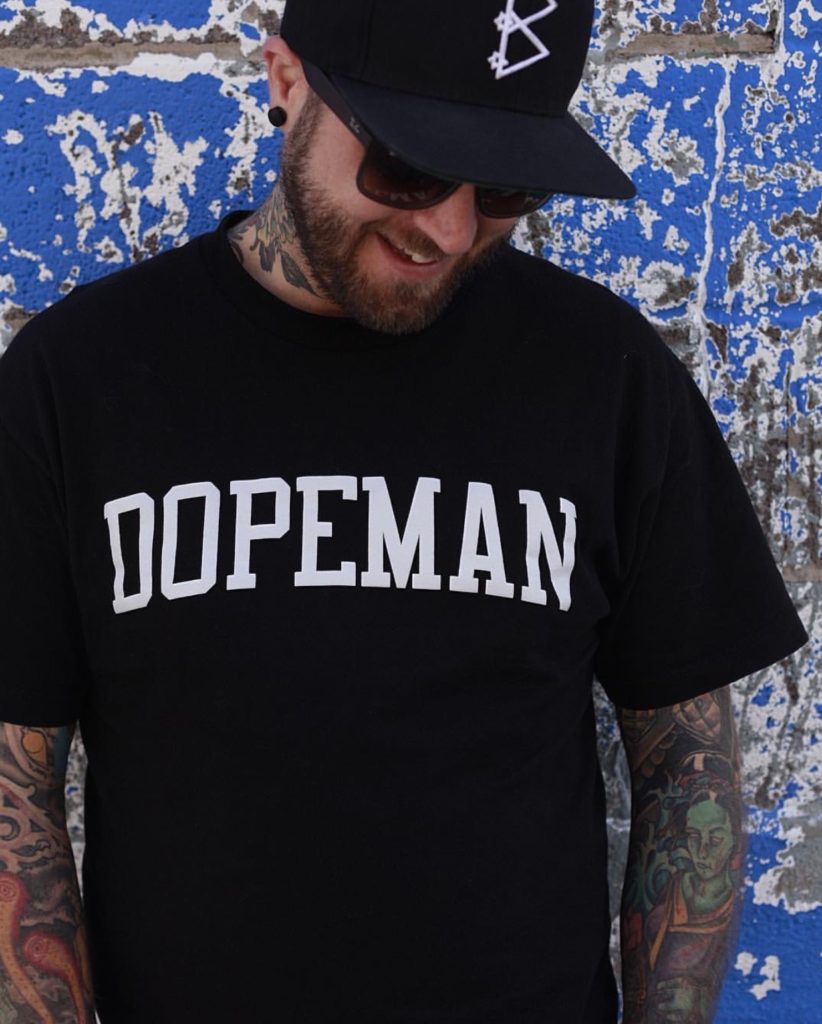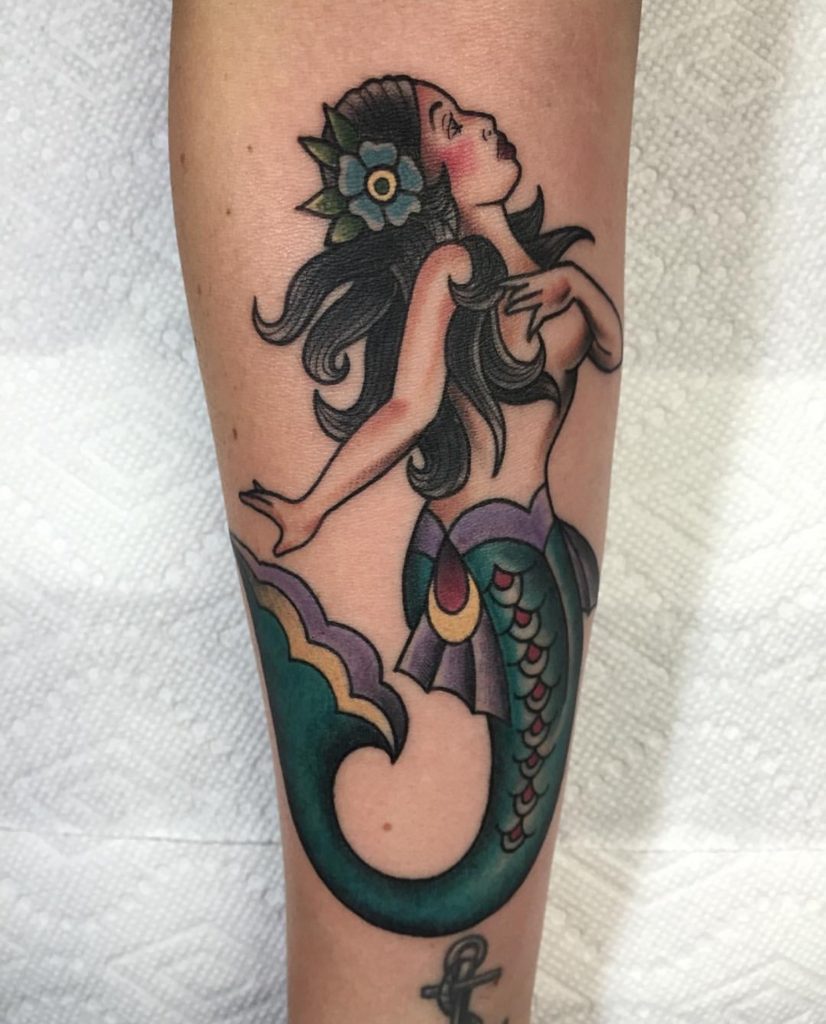
by MOLLY PETERSEN SKOVGAARD
In today’s world, tattoos are accepted and appreciated as body art by many. Some believe the drive to acquire body ink is addictive. The art of tattoos is as ancient as religion itself—mummies from 300 BC have been found with animal tattoos. But there has yet to be a limit set for addiction to body art. To find out more information about tattoos, and whether getting inked can be addictive, I asked Kara Winstanley (tattoo enthusiast), Ken Knox (tattoo artist), and Maria Pyatakova (tattoo client) about their personal and work experiences.
Winstanley was 13 when she got her first tattoo: a peace sign—which she regretted. She went through the process of having it removed in the 11th and 12th grade. From 18 to 20, Winstanley’s been tattooed six times. And she still plans to add more to her body. She explains, “I like tattoos because I think they look dope on my skin, and I like it as a way of expressing myself. It’s a way of literally wearing who you are and what you represent on your body—something I can’t do through fashion, music, or other means.”
As for what Winstanley’s tattoos represent, she shares, “The Nefertiti head tattoo was my second, and it represents my mom as Nefertiti—the Egyptian goddess of beauty. My third tattoo was the numbers 1982 written in Arabic script, and it’s the year my parents got married. My fourth was roses, which I got to represent how much I’ve grown yet still blossoming into who I’ll be. The Greek baby is an unfinished piece by my favorite Greek sculptor, Gian Lorenzo Bernini, which represents me. I plan to add a Greek godlike figure to represent my dad, and add doves. The FARAJ behind my ear [was another] I got when I started my clothing line, named FARAJ. It means ‘the cure’ in Arabic.
My most recent tattoo is a Hindu scripture on my waist. It’s a Ganesh mantra that means ‘overcomer of obstacles.’ I’ve had a lot of things in my life that I’ve had to overcome, and I like embracing my ability to power through life.”
For the designs of her tattoos, Winstanley explains the process with her parlor: “I give them an idea of what I want, then they draw something up. If I like it, I get it. If I don’t, I tell them to make another one. It’s silly to get something inked on your body if it’s not exactly the way you want it to be.” Winstanley is huge on her passion for tattoos, but admits: “I tend to get tattoos when I’m stressed, and it helps relieve my stress. I enjoy the feeling.”
For those of you wondering what acquiring body ink feels like, Winstanley answers, “I have a high pain tolerance, but it does hurt for a while. Then, my body becomes numb to it and it becomes a good pain.” The only thing in Winstanley’s way of getting more tattoos is money. “I’d say it’s an expensive addiction. I would have way more if I could finance them on my own since my parents disapprove.” For Winstanley, tattoos are about their appearance. She adds, “I love tattoos. I just love how they look, especially on me. They’re beautiful.”
“I’ve never experimented with different inks,” Winstanley reveals. “I only use black ink—never any color. As for parlors, I have my tattoo hookup in Santa Barbara.”
Winstanley’s trusted tattoo artist, Knox, works and partially owns a tattoo parlor, 805 Ink, with another artist. TJ. Knox was introduced to the industry through a friend while in art school. He explains, “My friend thought my artwork would translate well to body art, and offered to apprentice me.” Knox has no clue how many tattoos he has. He just adds that he has a lot, saying, “most of [my tattoos] are just for fun—nothing too serious. I approach it like an art collection, getting pieces from a wide range of artists.”
Knox also elaborates on his customers and store location. “Most of my clients are return customers. But in a tourist town, there are a lot of walk-in customers.” Winstanley is a returning customer who always comes with a design in mind, yet Knox shares that “the vast majority of tattoos are drawn by the artist. We make sure the design translates well to skin and will hold up over the years.” As for the experience of getting tattooed, Knox reveals: “some people just sit there like a stone, while others freak the hell out. It’s a very odd sensation, and people definitely react strangely sometimes.” He also shares that “the customers come in for the art, but the experience is also a big part of it. Especially for the nervous first timers.”
 Maria Pyatakova got her first tattoo a month after her 20th birthday, after having wanted one for about a year and a half. Pyatakova says, “I never actually dared to go inside a parlor. So when I went to London this summer, a friend of mine recommended a good artist that he knew, and I just kind of thought ‘yeah, it’s now or never.’” She knew exactly what her tattoo was going to read—her father’s birthday.
Maria Pyatakova got her first tattoo a month after her 20th birthday, after having wanted one for about a year and a half. Pyatakova says, “I never actually dared to go inside a parlor. So when I went to London this summer, a friend of mine recommended a good artist that he knew, and I just kind of thought ‘yeah, it’s now or never.’” She knew exactly what her tattoo was going to read—her father’s birthday.
So the process was easy, as she describes, “I did not actually go to a parlor. The tattoo artist came to me. We sat down and drew out the design, chose the font and size together. He would draw it with a special pen on the back of my neck, take a picture and show it to me before using actual ink.”
What made Pyatakova want a tattoo was her love of art in all forms—and knowing the tattoo has personal significance, as opposed to being a random design that is aesthetically pleasing. She is happy with her tattoo, but doesn’t want another. She clarifies, “I only got this one because it’s something meaningful to me.” Pyatakova shares her experience getting tattooed: “for me, it was bearable—even though I didn’t keep the numbing cream on long enough.” It was not an experience to follow a certain trend, but a sign of how much she values her family. Although Pyatakova would not call getting tattooed pleasant, she can understand how some find it addicting.
She shares, “Getting inked does give you a certain adrenaline rush. I can see why people become addicted. It’s a unique feeling.” Pyatakova views tattoos as body ink, but it’s not her
newfound found passion. She states “In the modern day, I see tattoos as another form of art.”
The concept of body ink has developed into an art form for individuals to express themselves through meaningful tattoos or tattoos that are simply done for fun. The experience of getting inked differs greatly depending on the person—although Winstanley, Knox and Pyatakova all agree it is a unique sensation. Whether the drive to acquire more body ink is fueled by one’s own amusement, a passion for body art, or for stress relief, it is a decision made by individuals of today’s society.
